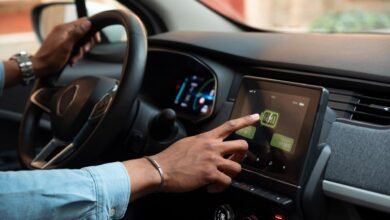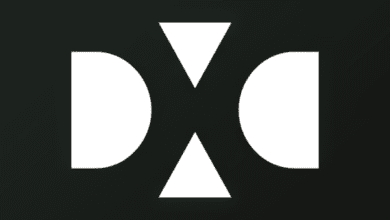Redesigning my use of information technology because my eyes betray me

Greetings from a warm northeast Virginia. It’s not too hot today, with temperatures hovering around 90° F/33° C, and quite dry. I just did a little weeding before heading to the gym and imagined the uprooted plants wilting in the sun. Hydration is the order of the day.
Sometimes on this blog I share personal stories and reflections. Today, I’m going to offer another one that has to do with information, technology, the body, and time. I’m starting to rethink how I use digital technology, again. This time, it’s because of the changes in my face. Specifically, my eyeballs are making things… difficult. It may be a small or minor thing in the end, but the details grow as I examine them, and the possibilities can be interesting.

My education and career have involved extreme amounts of eye strain due to large amounts of reading: for a PhD in literature, grading students’ writing, and increasing amounts of content on screen. My eyeballs have held up just fine.
…until a few years ago, when I reluctantly noticed a blurry small font. I found myself squinting to read some tiny product and book labels. After putting up with this enough, I bought my first cheap reader, or glasses designed to help people read up close, at a drugstore, and using them was a wonderful improvement. The fuzzy print jumped back to the clarity I remembered from before. So I bought several different readers and kept them in the places I was most likely to need them: my office, my laptop bag (I travel a lot for work), my nightstand (I always read before bed), and the kitchen (for recipes, labels, printed cookbooks).
One thing hasn’t worked out well. I’ve tried to get used to carrying glasses around with me, as well as keeping them in my laptop bag, but I’ve failed so far. I even bought a pair that hangs around my neck and attaches magnetically, which doesn’t involve carrying them in my pocket, which is convenient, but they tend to get caught in my beard, so I kind of deliberately forget about them. Instead, and pathetically, I end up using the magnifying glass app on my phone when I need to, say, read a printed menu at a restaurant or examine a food label at the grocery store.
Meanwhile, my average and distance vision have been fine. I have no trouble driving, reading street signs, identifying buildings, scanning the horizon for kaiju, etc. So there has been no need for bifocals or progressives.
Unfortunately, things seem to be getting worse again lately. I turned 57 this year, and now I’m noticing that some of the screen content on some devices is blurry. Some, not all: my desktop computer (a Mac Mini) produces easily readable stuff on a big screen, but sometimes laptop text is hard to read. My Kindle hardware e-reader is lovely once I make the font bigger, but I’m finding I have to squint at some parts of it on my phone (a new Galaxy Fold 5). When I play Xbox, I usually sit down, as one does, but increasingly I’m standing up to get closer to the screen to read small print in dialog boxes. Subtitles on a big screen are fine, but worryingly dark on small screens.
This is frustrating and worrying, but also fascinating. The word is presbyopia.
It’s a new term to me. Apparently, over time, the eyeball and related muscles gradually lose elasticity, making it harder to focus. The Mayo Clinic describes this as “a natural, often annoying, part of aging.” (Another friend wrote, “Welcome to your next stage of adulthood.”) I remember how old glass slowly, ever so slowly, starts to flow downward in the direction of gravity. I can see through those leaky glasses now.
What can be done in this situation?
First, I tinker with technology. Some devices and apps give me wide latitude for font sizes, which makes a big difference. The Kindle is great for this. Others don’t, or make those changes hard to find. On my phone, I can make some PDFs huge, but not Duolingo text. Fortunately, the Fold has a near-tablet-size mode, which some apps sprawl out. On my laptops, I can press command or control plus on web pages, which is great for text and some scripted images, but system dialogs are frustratingly immobile. A fair amount of text doesn’t appear as text at all, but as part of image files (like the 18th-century drawing above), and those I have to download to my desktop to manipulate in an image viewer or take a screenshot of… and sometimes they end up blurry. Some computer games have font options we can tweak, while others don’t.
I might also try changing default fonts on systems. An old friend recommended the Atkinson Hyperlegible Font, which I downloaded and (I think) installed on at least one machine. I think it will make some texts easier to read.
Then there’s the supplementary technology—namely, glasses. I can’t remember when I first put the glasses on to look at a phone, or what the stimulus was, but I do remember the sweet rush of clarity that resulted, as well as the strange way it felt, like peering through a window to see out another window. Now, I’ve started pushing my readers to use the laptop more and more often. It still feels odd, an admission of failure somewhere.
Naturally, I asked people about this idea, both in person and online, as is my usual open practice. A few people confessed to wearing glasses on their machines too, often citing their aging bodies. Often, it’s the close-up hardware that requires glasses: phones, tablets, laptops. Some said that devices positioned a bit further away — a desktop monitor a foot or two from their face, an airport flight screen a meter or so away — don’t require glasses. It’s good to know that others are in the same position.
Several people have recommended blue light readers, which reduce some of the input from computer screens. I haven’t tried these yet.
I still need to get used to carrying my readers around with me everywhere, and I haven’t gotten into the habit yet. Maybe I should attach them to something I’m used to carrying, like a phone or a watch. Maybe I should make an eyeglass case that I and a few others enjoy, either by repurposing and revamping an existing one or building one from scratch. I’d like to add a bit of my own style, maybe some gothic, metal, or steampunk themes.
Professionally, I’m a futurist. I have to look at the possibilities. Applying this lens (ahem) to myself, I assume that eyeball relaxation will continue and vision will continue to degrade. I also assume that I will continue to read a lot, both on screens and elsewhere. Based on this:
- A simple solution is to get used to always having glasses on my face. Bifocals may be in my future, so I can quickly switch between close-up and the rest of the world. I’ve also heard good things about progressive lenses, but I’ve never tried them.
- I’ve never been able to fit a contact lens into one of my eyeballs. Maybe I should try that as an option.
- Maybe the Meta Ray-Bans are a good step. I’ve long been fascinated by the possibilities of combining augmented reality with virtual reality, and this will be a useful experiment. I don’t know if I can get them with readers, though.
- Changing my hardware environment. The Fold opens up nicely, but I may need an even bigger screen in a few years. Should I wait to move to a full tablet then, or will the glasses have evolved enough to take over the functions of a phone?
- Doing more with audio. I can shift some close-up visual experiences to digital audio. I’m already a podcast addict and I like audiobooks; I can do more of that.
- Looking further ahead, I can imagine losing my near vision completely, perhaps within a decade or two, assuming I live that long. I don’t know if my mid- and long-range vision will fail as well. Perhaps the thing to do now is to start preparing for at least partial blindness and lean heavily into accessibility technologies.
- I don’t know what the medical options are at this point, nor have I researched (har har) possibilities for the next decade. Surgeries? Implants? Time to research.
This is where I’m going to stop now, having delved too deeply into ophthalmological matters. I’d love to hear suggestions or stories from people with more personal and/or professional experience with the eyeball.
(thanks to all sorts of friends on Mastodon and Facebook, not to mention my patient family)






